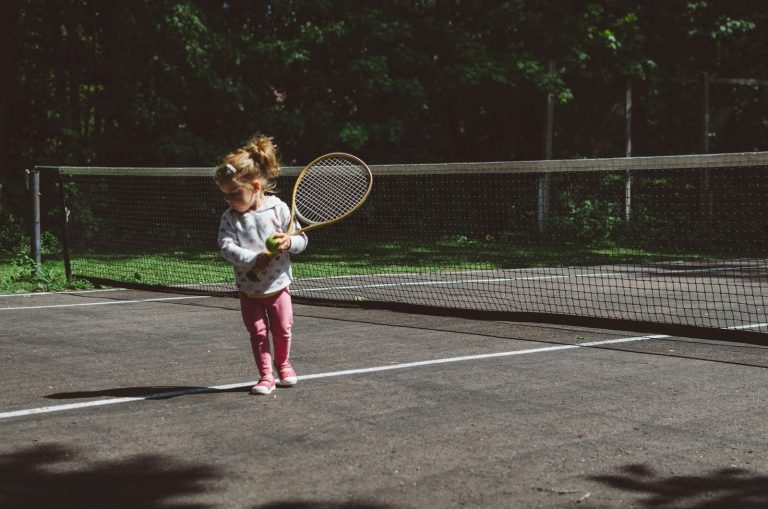While sports are a popular choice for children’s activities as they grow, safety concerns leave some parents wondering if it’s the best choice. From the soccer fields to swimming pools, ensuring that our children enjoy and benefit from sports while staying safe can sometimes feel like a juggling act. Let’s look at six pivotal strategies to keep your kids safeguarded as they indulge in their favorite athletic pursuits.
Story Stages
Know the Field: Understanding the Environment and Its Risks
One of the first steps in safeguarding young athletes is to understand the environments in which they play. Different sports have varying levels of risk associated with their play areas. For instance, sports like baseball and soccer require well-maintained fields to prevent injuries such as sprains and fractures from uneven surfaces.
Parents and coaches should regularly check these areas for potential hazards, such as holes, broken equipment, or unsafe surfaces. It’s also important to ensure the environment is suitable for the sport in terms of lighting and weather conditions is crucial. A well-lit basketball court or a dry soccer field can significantly reduce the risk of accidents.
Harnessing the Power Play: Unleashing the Benefits of Sports for Kids
While the focus is often on physical safety, understanding the broader benefits of sports for kids enriches the perspective on why we invest in these activities despite the risks. Sports help with physical health and they boost psychological well-being, teach teamwork, discipline, and resilience.
In the long summer days, sports can be a significant source of fun and learning. However, as we embrace these benefits, the responsibility to manage and mitigate the associated risks becomes more crucial.
Gear Up: The Critical Role of Safety Gear
Protecting the mouth is a very important aspect of sports safety. Football mouthguards and other face protective gear are necessary in protecting young athletes. These protective devices are not just for show; they are engineered to safeguard the mouth, teeth, and jaw during impact, which is common in many contact sports, not just football. A high-quality mouthguard can be the difference between dealing with a minor incident and a trip to the dental emergency room.
Choosing the right mouthguard involves selecting one that fits comfortably yet snugly, offering maximum protection without hindering the athlete’s ability to breathe and communicate. For parents, investing in a good mouthguard for their children means prioritizing their dental health and overall well-being, significantly reducing the risk of orofacial injuries.
Stay Alert: The Importance of Proper Hydration and Nutrition
Keeping young athletes hydrated and well-nourished is more than just a matter of maintaining energy levels—it’s a critical safety concern. Dehydration and poor nutrition can lead to decreased performance, lethargy, and even serious health risks like heat stroke and exhaustion, particularly in strenuous or long-duration sports. Parents should ensure their children drink plenty of fluids before, during, and after play, and understand the signs of dehydration which include fatigue, dizziness, and dry mouth. They should also ensure that their children are getting sports electrolytes as needed.
Similarly, providing a balanced diet rich in carbohydrates, proteins, and healthy fats can help maintain their energy levels and repair muscles after activity. Snacks like fruits, nuts, and yogurt are excellent for maintaining energy without being too heavy. By managing these aspects of an athlete’s routine, parents can significantly reduce health risks and enhance their child’s overall sports experience.
Warm-Up to Wind Down: The Non-Negotiable Pre and Post Activity Routines
Warming up and cooling down are essential practices that prepare the body for the stress of sport and aid in recovery afterward. A proper warm-up improves blood flow to each of the muscles, making them more elastic and less prone to tears.
Dynamic stretches that include leg swings, arm circles, and gentle jogging can also be effective. Post-activity, cooling down helps to gradually lower the heart rate and stretches help to alleviate muscle stiffness. Ensuring that young athletes adopt these routines will not only help prevent injuries but also teach them good habits that can support lifelong athletic participation.
Smart Play: Teaching Awareness and Respect for Rules and Boundaries
The final layer of safety in youth sports revolves around the awareness and adherence to the rules of the game and personal boundaries. Educating young athletes about the importance of following the rules, the reasons behind them, and the consequences of not adhering to them is vital.
Sportsmanship practices can also greatly reduce incidents of aggressive play that might lead to injuries. Furthermore, understanding personal boundaries, such as recognizing when they’re feeling overly fatigued or might be at risk of overuse injuries, is crucial. Parents and coaches need to help reinforce these concepts through continuous dialogue and by setting a good example.
